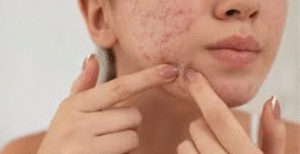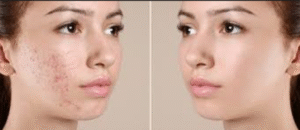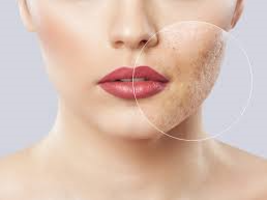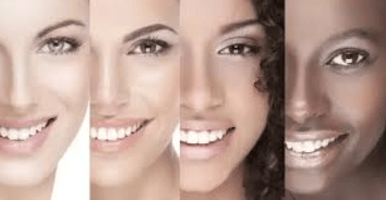Have you ever looked in the mirror and wondered about those mysterious spots, bumps, or marks that seem to appear on your skin overnight? You’re definitely not alone in this struggle. Understanding blemishes is the first step to having clearer, healthier skin, regardless of whether you have dark spots, acne, or other skin issues.
Blemishes can be frustrating, embarrassing, and sometimes even painful. They have a way of showing up at the worst possible moments – right before an important meeting, a special date, or a significant event. But here’s the thing: blemishes are incredibly common, and with the right knowledge and approach, they can be managed and treated successfully.
From understanding what causes them to exploring effective treatment options, you’ll walk away with practical insights that can help transform your skincare routine and boost your confidence.

Understanding What Blemishes Really Are
Blemishes are essentially any type of mark, spot, or imperfection that appears on your skin. They can range from temporary issues like pimples to more persistent concerns like age spots or scars. The term ‘blemish’ serves as an umbrella that covers various skin conditions, each with its own unique characteristics and causes.
Your skin is constantly working to protect your body from environmental factors, bacteria, and other harmful substances. Sometimes, this protective process can go awry, leading to the formation of blemishes. The appearance of blemishes can vary dramatically from person to person.
Some people might experience occasional breakouts, while others deal with persistent skin issues. Factors like genetics, hormones, lifestyle choices, and environmental conditions all play crucial roles in determining how your skin behaves and what types of blemishes you might encounter.
The Main Types of Blemishes You Should Know About
Acne-Related Blemishes
People of all ages can get acne, one of the most prevalent types of blemishes, which develops when oil, dead skin cells, and bacteria block hair follicles.
Blackheads are tiny, dark areas on the skin’s surface. Contrary, to popular belief, the dark color isn’t dirt – it’s actually oxidized oil and dead skin cells that have been exposed to air. Usually, the forehead, chin, and nose are where these open comedones show up.
Whiteheads are tiny, flesh-colored or white lumps that are closed comedones. The pore opening is closed, which stops the contents from oxidizing and darkening like blackheads do.
Papules are small, red, inflamed bumps that feel tender to the touch. These represent the next stage of acne development, where bacteria have caused inflammation within the clogged pore.
Pustules resemble papules, but with visible pus at the surface. They appear as red bumps with white or yellow centers and can be tempting to squeeze, though this should be avoided.
Nodules are big, painful lumps that form deep within the skin. These serious forms of acne can be particularly challenging to treat and may require professional intervention.
Cysts are the most serious among acne blemishes, These large, pus-filled lumps develop deep beneath the skin surface and can cause significant discomfort and scarring.

Pigmentation Blemishes
Age spots, sometimes referred to as liver spots or sun spots, are flat, brown, or black spots that usually show up on skin that has been exposed to the sun. Despite their name, these blemishes are more related to sun exposure than aging, though they become more common with age.
Melasma appears as brown or gray patches, typically on the face. This condition is often triggered by hormonal changes, particularly during pregnancy, earning it the nickname “pregnancy mask.”
Post-inflammatory hyperpigmentation results when the skin produces too much melanin in reaction to inflammation or damage, this often happens after acne clears, leaving behind dark spots that can persist for months or even years.
Vascular Blemishes
Broken capillaries appear as thin, red lines on the skin surface. These small blood vessels become visible when they dilate or break, often due to sun exposure, aging, or certain skin conditions.
Cherry angiomas are little red pimples that can develop anywhere on the body. These benign growths become more common with age and are generally harmless.
What Leads to Skin Blemish Formation?
Being aware of the underlying causes of blemishes enables you to make well-informed choices regarding treatment and prevention. Multiple factors contribute to blemish formation, often working together to create the perfect storm for skin problems.
Hormonal Influences
Hormones play a massive role in blemish formation, particularly during puberty, menstruation, pregnancy, and menopause. Androgens, including testosterone, stimulate oil production in your skin. When oil production increases dramatically, pores can become clogged more easily, leading to various types of acne blemishes.
Many adults experience hormonal acne, particularly women who notice breakouts coinciding with their menstrual cycles. This type of acne typically appears along the jawline, chin, and lower cheeks, areas that are particularly sensitive to hormonal fluctuations.
Genetic Factors
Your genetic makeup significantly influences your skin’s behavior and susceptibility to blemishes. If your parents struggled with acne or other skin issues, you’re more likely to experience similar problems. Everything from pore size and oil production to the way your skin reacts to inflammation and recovers from wounds is influenced by your genetic makeup.
Lifestyle and Environmental Factors
Your surroundings and daily routine have a big influence on the condition of your skin.
Stress triggers the release of cortisol, which can increase oil production and worsen existing blemishes. Chronic stress can also impair your skin’s ability to heal, making blemishes last longer and appear more severe.
Diet plays a controversial but increasingly recognized role in skin health. Some studies suggest that high-glycemic foods and dairy products may contribute to acne formation in certain individuals. While the relationship isn’t universal, many people notice improvements in their skin when they modify their diet.
Sleep quality affects your skin’s repair processes. During sleep, your body produces growth hormones that help repair damaged skin cells. Poor sleep can disrupt these processes, potentially leading to more frequent and severe blemishes.
Skincare and Cosmetic Products
Using the wrong products for your skin type can contribute to blemish formation.
Comedogenic products contain ingredients that can clog pores, while harsh cleansers can strip your skin of natural oils, leading to increased oil production as your skin tries to compensate. Over-washing or using too many active ingredients can disrupt your skin’s natural barrier, leading to irritation and inflammation that can worsen existing blemishes or create new ones.
Effective Treatment Options for Different Types of Blemishes
Treating blemishes effectively requires understanding which type you’re dealing with and choosing appropriate treatment methods. A one-size-fits-all approach rarely works, as different blemishes respond to different treatments.
Topical Treatments
Salicylic acid is a beta-hydroxy acid that dissolves dirt and lowers inflammation by penetrating oil-filled pores. It’s particularly effective for blackheads and whiteheads, as it can reach deep into pores to clear out accumulated material.
Benzoyl peroxide helps stop acne by killing the bacteria that causes it. It can be very helpful for inflammatory acne and comes in a variety of strengths. However, it can be drying and may cause irritation, especially when first starting treatment.
Retinoids which are Vitamin A compounds help to avoid pore blockage and encourage cell turnover. They’re considered the gold standard for acne treatment and can also help with post-inflammatory hyperpigmentation. There are prescription and over-the-counter alternatives.
Niacinamide helps regulate oil production and reduce inflammation. It’s gentler than many other active ingredients and can be suitable for sensitive skin types.
Professional Treatments
Chemical peels use acids to remove damaged skin layers and promote new cell growth. They can be effective for both active acne and post-acne marks, though they require professional application and careful aftercare.
Laser treatments can target specific types of blemishes, from acne scars to pigmentation issues. Different laser types work in various ways, and treatment plans are typically customized based on individual skin concerns.
Extraction procedures performed by professionals can safely remove stubborn blackheads and whiteheads without causing additional damage or scarring.

Prevention Strategies That Actually Work
Preventing blemishes is often easier and more cost-effective than treating them after they appear. Developing a consistent prevention routine can significantly reduce the frequency and severity of breakouts.
Establishing a Proper Skincare Routine
Gentle cleansing twice daily removes excess oil, dirt, and bacteria without over-drying your skin. Choose a cleanser appropriate for your skin type – gel cleansers for oily skin, cream cleansers for dry skin, and gentle, fragrance-free options for sensitive skin.
Moisturizing is crucial even for oily skin types. Your skin is less likely to overproduce oil to make up for dryness when it is properly moisturized. Look for non-comedogenic moisturizers that won’t clog pores.
Sun protection prevents both immediate sun damage and long-term issues like age spots and premature aging. Use broad-spectrum sunscreen with at least SPF 30 daily, regardless of weather conditions.
Lifestyle Modifications
Stress management through exercise, meditation, adequate sleep, or other relaxation techniques can significantly impact your skin’s health. Prolonged stress can increase pre-existing skin issues and cause inflammation.
Dietary considerations may help some individuals. While the relationship between diet and acne isn’t universal, reducing processed foods and increasing consumption of anti-inflammatory foods like fruits, vegetables, and omega-3 fatty acids may benefit some people.
Avoiding touching your face reduces the transfer of bacteria and oils from your hands to your skin. This simple habit can prevent many blemishes from forming.
When to Seek Professional Help
Although many blemishes may be controlled with over-the-counter remedies and proper skincare practices, other circumstances call for expert assistance. Recognizing when to seek help can prevent more serious skin issues and reduce the risk of scarring.
Persistent or severe acne that doesn’t respond to over-the-counter treatments may require prescription medications. In addition to being more successful, professional treatments can stop acne scars from forming.
Scarring or dark spots that don’t fade with time and gentle treatment may benefit from professional procedures like chemical peels, laser treatments, or other advanced therapies.
Sudden changes in your skin should be evaluated by a dermatologist to rule out underlying conditions or to ensure that what you’re treating is actually what you think it is.
FAQs
What is the difference between a blemish and a pimple?
A pimple is actually a specific type of blemish. While blemishes encompass any mark, spot, or imperfection on the skin, pimples are specifically inflamed, infected hair follicles that appear as red, raised bumps, sometimes with pus. Not every blemish is a pimple, but every pimple is a blemish. Scars, broken capillaries, age spots, and blackheads are some more kinds of blemishes.
Can blemishes be permanent?
Some blemishes are temporary and will fade with time and proper treatment, while others can be permanent without intervention. Acne scars, deep age spots, and certain types of pigmentation can be permanent if left untreated. However, many seemingly permanent blemishes can be significantly improved or completely eliminated with appropriate professional treatments.
Are blemishes contagious?
Blemishes themselves are not contagious, but the bacteria that contribute to certain types of acne can be transferred between people through direct contact or shared items like towels, pillowcases, or makeup tools. This is why it’s important to maintain good hygiene and avoid sharing personal items that come into contact with your face. However, you cannot ‘catch’ blemishes from someone else in the way you might catch a cold.
Why do blemishes seem to appear overnight?
While blemishes may seem to appear suddenly, they actually develop over time beneath the skin’s surface. The formation process typically takes several days to weeks, but the visible signs only become apparent when the blemish reaches the surface layer of skin. Factors like hormonal changes, stress, or new skincare products can accelerate this process, making it seem like blemishes appear overnight.
Can makeup cause blemishes?
Makeup can contribute to blemishes if it contains comedogenic ingredients or if proper hygiene isn’t maintained. Heavy, oil-based foundations and products that aren’t removed properly can clog pores and lead to breakouts. However, many modern makeup products are formulated to be non-comedogenic and may even contain beneficial ingredients for your skin. The key is choosing appropriate products for your skin type and maintaining proper cleansing habits.
Conclusion…
Understanding what are blemishes is the foundation for developing an effective skincare strategy that works for your unique needs. Blemishes are simply a natural part of how skin functions, and with the right knowledge and approach, they can be managed successfully.
Your skin is unique, and with the right care and attention, you can achieve the healthy, clear complexion you desire. The journey to better skin health starts with understanding, continues with consistent care, and succeeds through patience and persistence.
Armed with this comprehensive knowledge about blemishes, you’re well-equipped to make informed decisions about your skincare routine and achieve the results you’re looking for.



